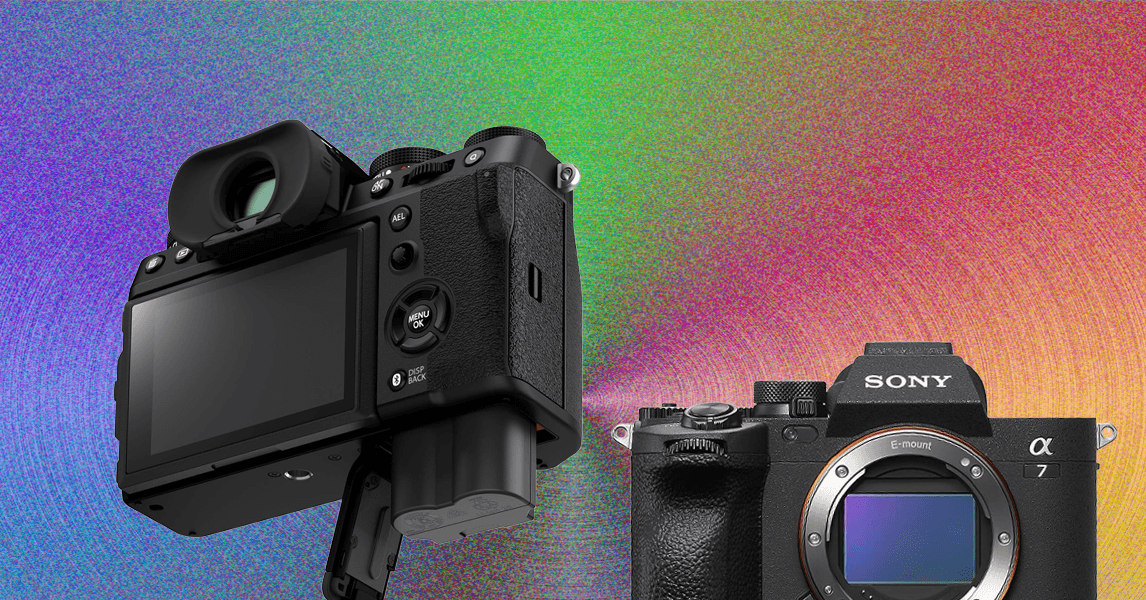The best mirrorless camera for you depends on what you want to do with it. Ultimately, there is no such thing as the perfect camera. Each has its own limitations, and part of the magic of photography is learning how to get around them. What you want to find is the camera best suited to the type of photos you like to take. This can be a complicated process so we put together an entire guide to choosing the right camera, which walks you through all the jargon, acronyms, sensor options, and extra features to help you figure out the best options for you.
Here are some features to keep in mind, depending on the type of images you are interested in making. While all the cameras below have these features, performance varies and some are better at, for instance, low light photography than others.
Sensor size: Yes, I said it doesn’t matter and it doesn’t, but you do need to understand it. For example, if you’re interested in shooting wildlife, a higher resolution sensor, like Sony’s 60 MP sensor in the A7R V, will allow you to crop in on images more than a 24 MP sensor. On the other hand, there’s not much reason to spend extra for more megapixels if you aren’t going to use them.
Autofocus: When I first picked up a camera in the 1980s, autofocus was a brand-new thing. The Minolta Maxxum 7000 was the first SLR camera with an integrated autofocus system and completely changed the way photography worked. The flip side to this is that every single image made before the early ’80s was manually focused, so no, you don’t need autofocus to make a great image. Every camera below has insanely fast autofocus. However, the accuracy varies, so if this feature is important to you, pay attention to those notes.
In-body image stabilization: Often referred to as IBIS, stabilization in the camera body helps eliminate hand shake, allowing you to shoot at slower shutter speeds and still get a sharp image. This one is especially important for anyone wanting to shoot in low light conditions.
Electronic viewfinder: Often abbreviated EVF, the viewfinder is what you use to compose your shots and there is perhaps more variation here between cameras than any other features. The viewfinder has a huge impact on how much you’ll enjoy using a camera. This is one place I suggest heading to your local camera shop to try out the viewfinder in person and make sure it works for you, especially if, like me, you wear glasses.
Weather sealing: An often overlooked feature that’s important if you want to shoot in adverse conditions. This one is important for landscape photographers. A related feature to look for is a sensor cover that protects the sensor from dust and dirt when changing lenses.
Battery life: Battery life is pretty good across camera bodies these days, but there are still some that are better than others. For example, my Sony A7RII chews through batteries and I seldom head out with fewer than 2 backups, which is a pain.
In-camera JPEG quality: All the cameras here can save your images as RAW files, JPEG files, or both at the same time. However, some cameras produce better JPEGs than others. Fujifilm is especially noted for the amount of control it offers to fine-tune in-camera JPEGs, though Panasonic’s Lumix line has recently added the ability to apply LUTs in-camera, which is also very nice.
Once you’ve got your camera, read the manual and learn what it can and cannot do, and then use it over and over until it is an effortless extension of your mind. Once you have the comfort level, the gear fades into the background where it belongs, and you can focus on making the images you’ve always dreamed of creating.



No Comment! Be the first one.